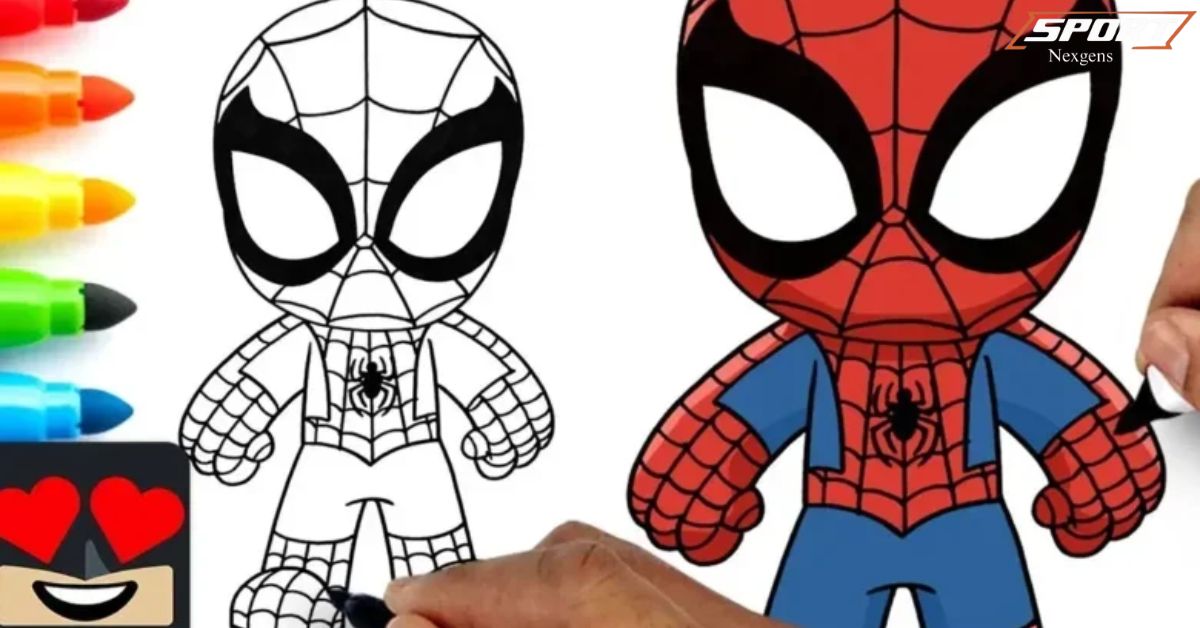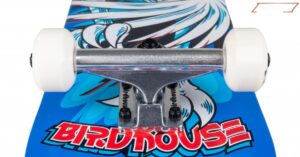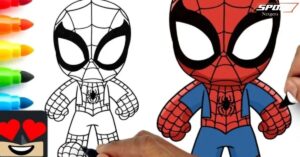Drawing Spider-Man is the art of visually depicting the iconic Marvel superhero. It involves capturing his distinctive costume, athletic physique, and dynamic poses. This skill combines elements of comic book illustration and character design.
Swing into the amazing world of Spider-Man artistry! Discover how to bring the web-slinger to life on paper. Unleash your inner artist and learn to draw Marvel’s most beloved hero. Whether you’re a beginner or a seasoned pro, there’s always more to explore in Spider-Man’s universe.
Spider-Man, created by Stan Lee and Steve Ditko, has captivated fans for decades. His unique design challenges and inspires artists worldwide. This guide will take you from basic sketches to advanced illustrations. Prepare to unlock the secrets of drawing the friendly neighborhood Spider-Man!
What Is Drawing Spider-Man?
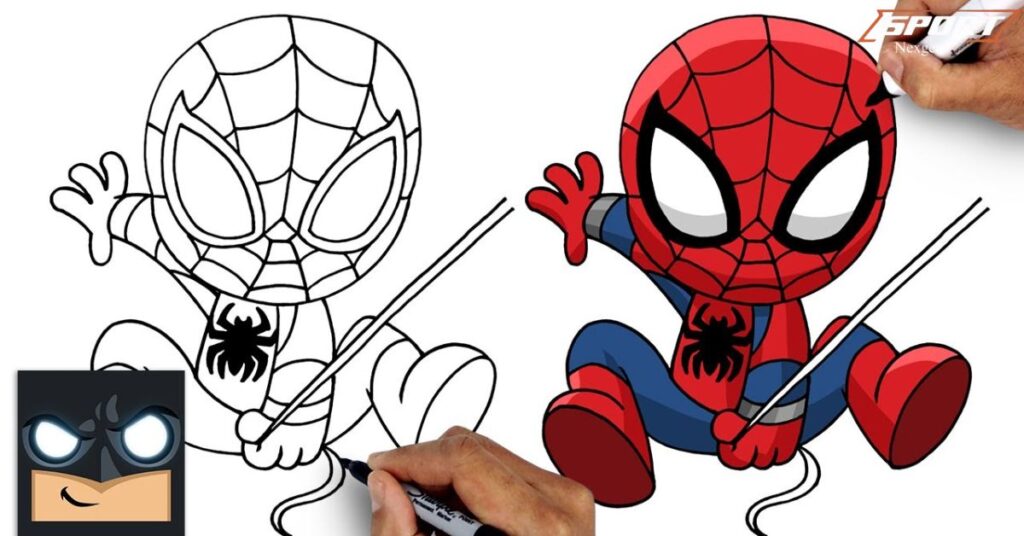
Drawing Spider-Man is the art of capturing the essence of Marvel’s iconic web-slinger on paper or digital canvas. It involves mastering anatomy, dynamic poses, and costume details to bring this beloved superhero to life.
Spider-Man’s unique design challenges artists to blend human proportions with superhuman agility. Drawing Spidey requires understanding his character’s history and various incarnations across comics, movies, and games.
Understanding the Basics of drawing Spider-Man
Start with simple shapes to outline Spider-Man’s body. Focus on his iconic proportions and posture. Practice drawing his mask and web pattern.
1. Getting to Know Spider-Man’s Anatomy
Spider-Man’s body is a blend of athleticism and flexibility. Start by mastering basic human anatomy with an emphasis on lean muscle structure. Focus on elongated limbs and a lithe torso.
Practice drawing exaggerated spine curves for Spidey’s signature crouches. Pay attention to his unique hand positions for web-shooting. Study real spider anatomy to inform poses and movements.
2. Spider-Man Basic Sketching Techniques
Begin with simple shapes to rough out Spider-Man’s form. Use circles for joints and cylinders for limbs. Practice quick gesture drawings to capture Spidey’s energy.
Employ loose, flowing lines for a sense of movement. Experiment with different pencil grips for varied line weights. Use construction lines to maintain proportions across different poses.
Read This Blog: Discover the Joy of Cute:_757rbppozw= Wallpaper in Your Living Space
3. Drawing Spider-Man’s Iconic Costume
Master the basic mask shape with its large, expressive eyes. Practice drawing the web pattern starting with major lines. Focus on the spider emblem variations for different Spider-Man versions.
Study the costume’s seam lines and paneling. Experiment with different suit textures from fabric to high-tech materials. Pay attention to how the costume wrinkles and stretches with movement.
Mastering Intermediate Techniques for drawing Spider-Man
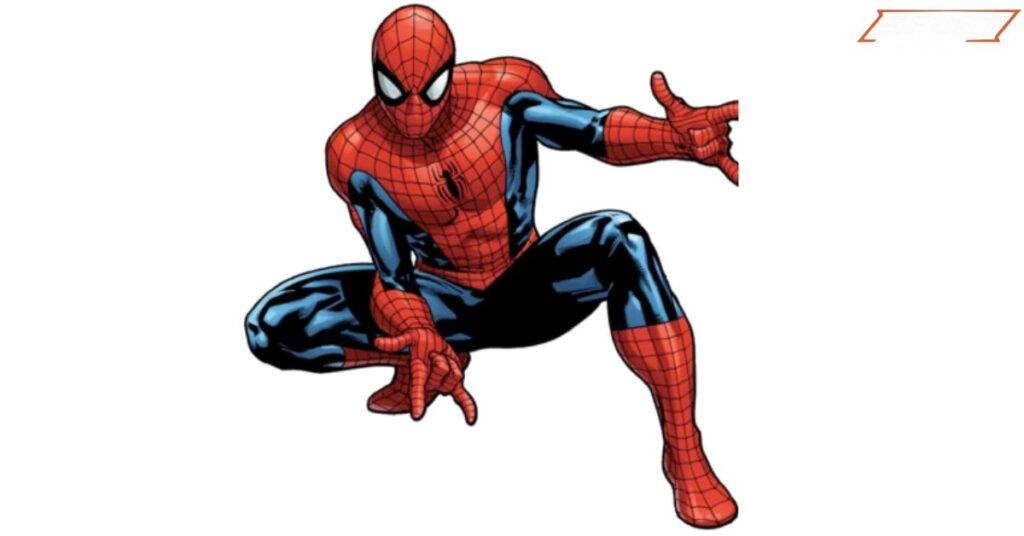
Refine your lines and add muscle definition. Work on dynamic poses to capture Spider-Man’s agility. Experiment with different web-slinging actions.
1. Spider-Man Adding Details and Textures
Refine the web pattern with consistent spacing and intersection points. Add subtle muscle definition beneath the suit. Incorporate tech details for suits like the Iron Spider.
Practice drawing different fabric textures for various costume versions. Experiment with weathering and battle damage for dynamic scenes. Master small details like web shooters and costume zippers.
2. Spider-Man Enhancing the Web Patterns
Develop techniques for efficient web pattern drawing. Create custom brushes for digital web detailing. Practice organic web shapes for action scenes. Experiment with varied web thicknesses for depth and realism. Study how webs interact with light for shading purposes. Incorporate web fluid dynamics in swinging and combat poses.
3. Spider-Man Capturing Dynamic Poses
Master Spider-Man’s signature acrobatic moves. Practice drawing extreme foreshortening for web-swinging. Study parkour and gymnastics for pose inspiration. Experiment with multi-limb action poses unique to Spidey. Focus on creating a sense of motion in static images. Develop skills in drawing mid-air twists and flips.
Advanced Techniques for Mastering drawing Spider-Man
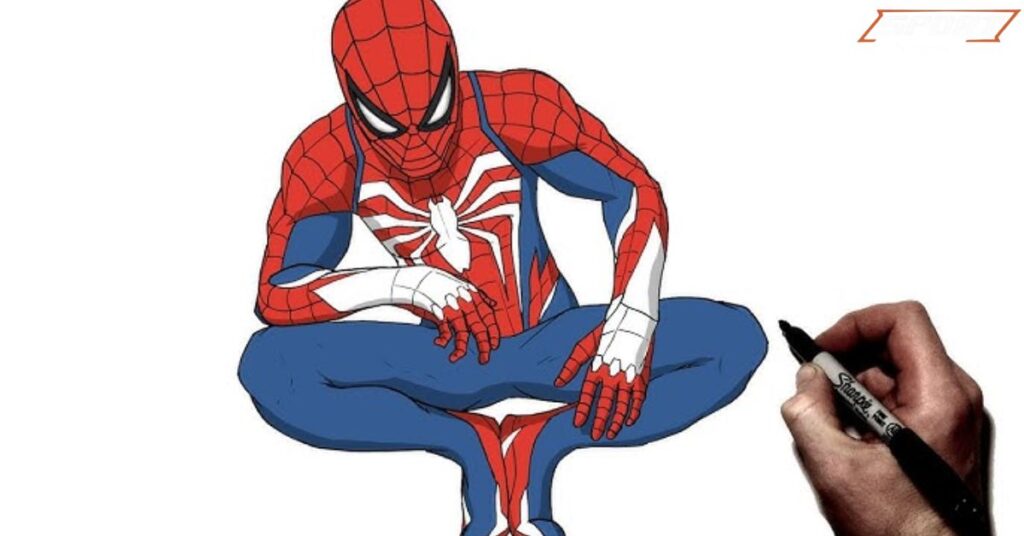
Perfect Spider-Man’s costume details and textures. Master foreshortening for dramatic angles. Incorporate backgrounds to enhance the overall composition.
1. Spider-Man Using Perspective for Depth
Master complex cityscape backgrounds for Spidey’s urban environment. Practice varied camera angles to enhance dynamic poses. Utilize forced perspective to emphasize Spider-Man’s agility. Experiment with fish-eye effects for swinging sequences.
Incorporate vertical perspective for wall-crawling scenes. Study architectural drawings to create convincing New York settings.
Read This Blog: SwipeSparkle.us: The Future of Eco-Friendly Home Cleaning
2. Spider-Man Incorporating Background Elements
Develop skills in drawing detailed urban environments. Practice creating diverse crowd scenes for street-level action. Master integrating webs with architecture for swinging scenes.
Experiment with environmental storytelling through background details. Study comic panel composition to balance Spidey with surroundings. Create convincing skylines and cityscapes for larger scenes.
3. Spider-Man Mastering Lighting and Shadow
Perfect the art of dramatic comic book lighting. Experiment with light reflection on Spidey’s costume. Master shadow play for nighttime or noir-style scenes. Practice rim lighting techniques to make Spider-Man pop.
Study how webs interact with different light sources. Develop skills in creating mood and atmosphere through lighting choices.
Common Challenges in drawing Spider-Man and How to Overcome Them
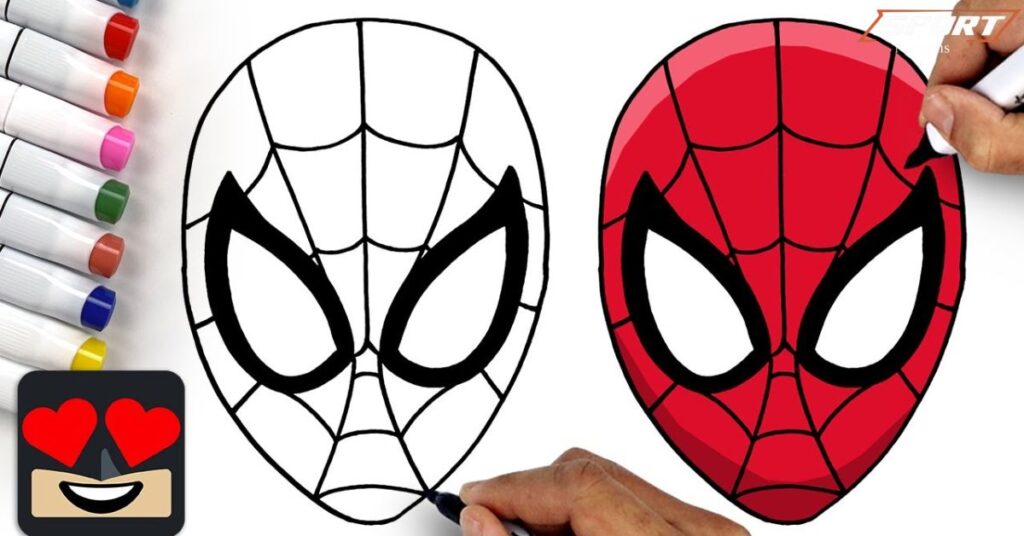
Simplify complex poses by breaking them down into basic shapes. Use reference images to improve accuracy. Practice consistently to overcome proportional issues.
1. Spider-Man Proportions and Anatomy
Challenge: Maintaining consistent body proportions across different poses. Solution: Create a personal reference sheet with Spider-Man’s proportions. Practice breaking down complex poses into simple shapes. Use digital layers or tracing paper to check proportions against a base model.
2. Spider-Man Creating Realistic Web Patterns
Challenge: Drawing consistent and believable web patterns quickly. Solution: Develop a systematic approach to web pattern creation. Practice simplifying web designs for quicker sketching. Create custom brushes or stamps for digital web detailing.
3. Spider-Man Achieving Dynamic Poses
Challenge: Making Spider-Man’s poses look fluid and dynamic. Solution: Study action photography and sports footage for reference. Practice gesture drawing to capture the essence of movement. Exaggerate key lines of action in your poses for more impact.
Tips for Improving Your Spider-Man drawing Skills
Study Spider-Man comics and films for inspiration. Experiment with different art styles. Share your work and seek feedback from other artists.
| Latest Tips for Drawing Spider-Man |
|---|
| Utilize digital tools for precise line work and color |
| Experiment with 3D modeling software for perspective practice |
| Explore community forums for feedback and tips |
| Check out recent Spider-Man comics for style inspiration |
| Incorporate motion lines to enhance dynamic poses |
1. Spider-Man Practice Regularly
Set aside dedicated time for Spider-Man sketches. Create a daily drawing challenge focused on different aspects of Spidey. Maintain a Spider-Man-specific sketchbook for consistent practice.
Experiment with drawing Spider-Man in different styles to expand your skills. Participate in online drawing challenges for motivation and deadlines.
2. Spider-Man Seek Feedback and Critique
Join online comic art communities for constructive criticism. Share your work on social media platforms with relevant hashtags. Attend comic conventions to get feedback from professionals.
Participate in local art groups or classes for in-person critique. Be open to both positive and negative feedback for growth.
3. Spider-Man Study Spider-Man Art from Various Sources
Analyze classic Spider-Man comic artists like Steve Ditko and John Romita Sr. Study modern interpretations from artists like Mark Bagley and Sara Pichelli. Examine Spider-Man designs from movies and video games.
Create studies of your favorite Spidey artworks to understand techniques. Explore fan art communities for diverse style inspirations.
Tools and Resources for drawing Spider-Man
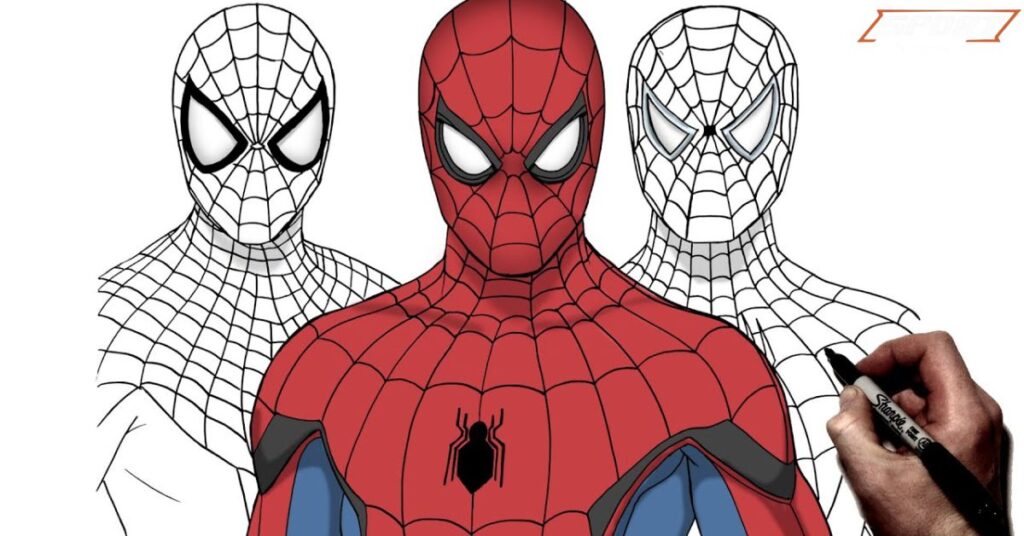
Invest in quality drawing materials suited to your preferred medium. Utilize online tutorials and art communities for learning. Consider digital drawing tools for versatility in your Spider-Man artwork.
1. Spider-Man Drawing Software and Apps
Explore digital art programs like Photoshop, Clip Studio Paint, and Procreate. Utilize Spider-Man-themed brush sets available for various software. Try vector-based programs like Adobe Illustrator for clean linework.
Experiment with 3D posing software for complex perspective references. Use color palette generators to create classic Spidey color schemes.
2. Spider-Man Sketchbooks and Drawing Materials
Invest in quality sketchbooks with paper suitable for your preferred medium. Try red and blue col-erase pencils for under-sketching Spidey’s colors. Experiment with brush pens for dynamic inking styles. Use marker paper for vibrant costume coloring. Try toned paper for interesting lighting effects on Spider-Man.
3. Spider-Man Online Tutorials and Courses
Enroll in comic art courses on platforms like Udemy or Skillshare. Follow YouTube tutorials from professional comic artists. Subscribe to the Patreon pages of Spider-Man artists for exclusive content.
Participate in live drawing sessions focused on superhero art. Explore Marvel’s official art tutorial content for character-specific tips.
FAQ’s
What’s the best way to start learning how to draw Spider-Man?
Start with basic shapes and poses, focusing on Spider-Man’s unique proportions and iconic costume elements.
How can I improve drawing Spider-Man’s web patterns?
Practice simplifying web designs and consider creating custom brushes or stamps for digital work.
What materials are best for drawing Spider-Man?
Both traditional (pencils, inks) and digital tools work well. Choose based on your comfort and the style you’re aiming for.
How do I capture Spider-Man’s dynamic movement in my drawings?
Study action photography, practice gesture drawing, and exaggerate key lines of action in your poses.
Where can I find good references for drawing Spider-Man?
Comics, movies, video games, and official Marvel resources all provide excellent reference material for Spider-Man artwork.
Conclusion
Drawing Spider-Man is a thrilling artistic journey that combines anatomical knowledge, costume design, and dynamic action. From mastering the basics of Spidey’s unique physique to creating complex, web-swinging cityscapes, each stage offers new challenges and rewards.
Whether you’re sketching for fun or aspiring to professional comic art, the process of drawing Spider-Man can significantly enhance your overall artistic skills. As you progress, don’t forget to inject your personal style into your Spider-Man artwork, contributing to the rich legacy of this beloved character’s visual history.

Our celebrity-focused website offers readers an insider’s view into the glamorous world of stars. We deliver breaking news, exclusive interviews, and behind-the-scenes gossip. From red carpet events to personal milestones, we cover it all. Join us for daily updates on your favorite celebrities’ lives, careers, and controversies.
